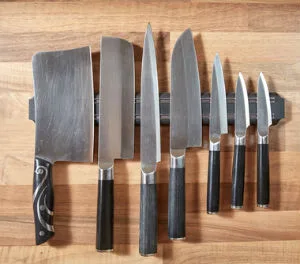Material and length
The material used in the blade affects the knife's price, performance and durability. Stainless steel and carbon steel are the two most popular choices. Stainless steel is affordable and resists stains but requires regular sharpening whereas carbon steel is hard and sharpens easily, but is expensive, has no stain resistance and requires special maintenance to prevent rust. There's also c, which is essentially designed to offer all the benefits of stainless steel but with extra durability. Other options include ceramic blades (very hard and sharp but can chip or crack), Damascus steel (looks beautiful but can be expensive) and stainless steel.
